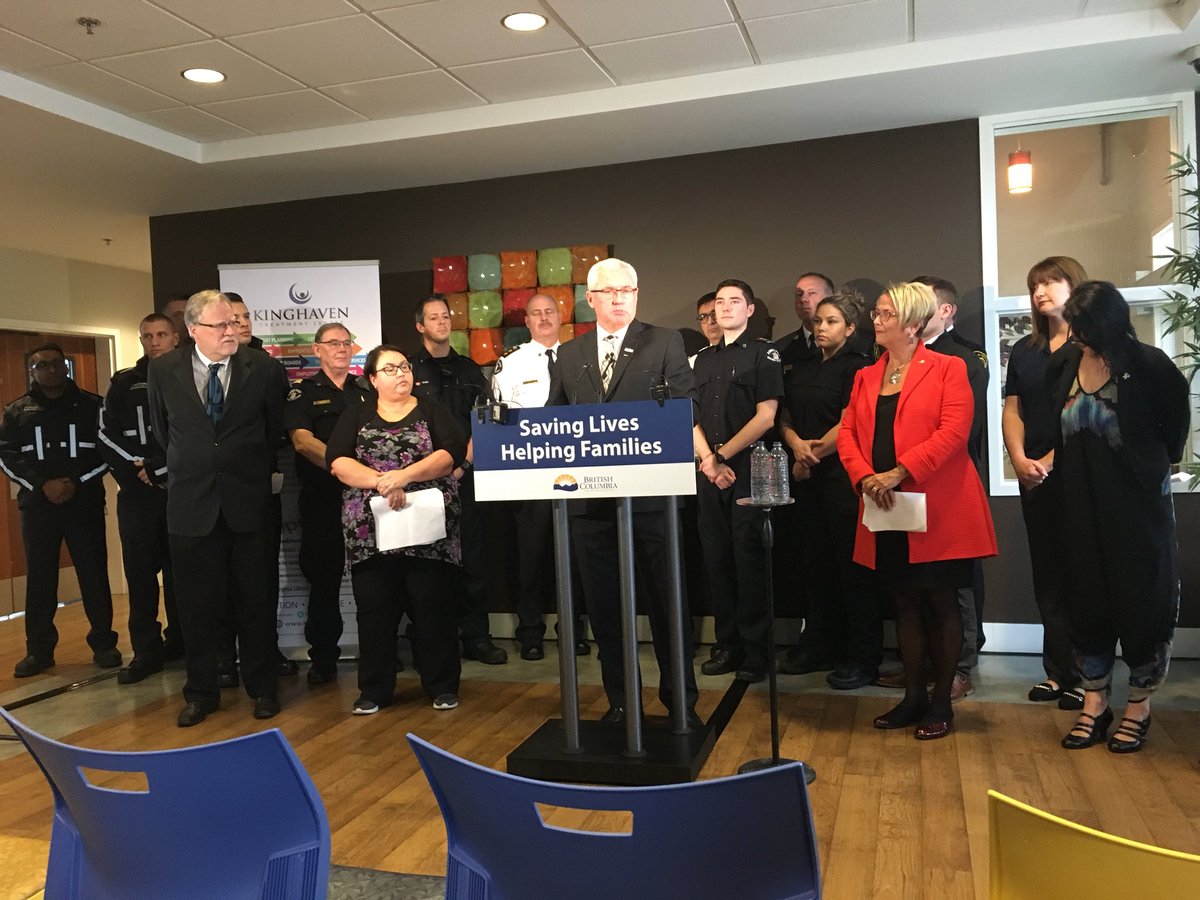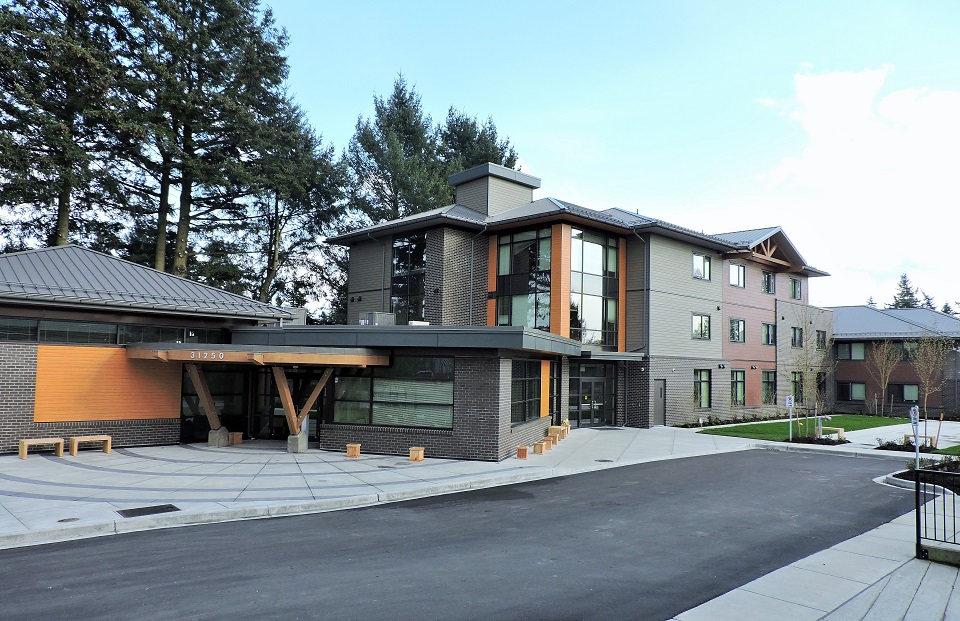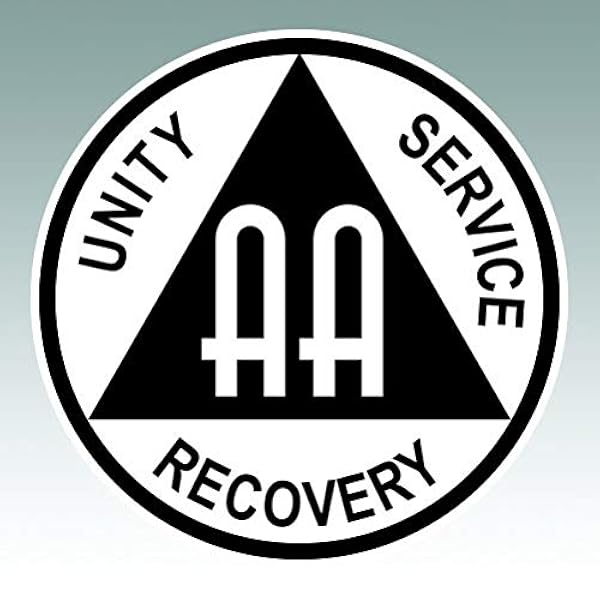Victoria/Fraser Valley – 18 B.C. communities hardest hit by the overdose crisis are the first to get the support of on-the-ground community action teams (CAT) and dedicated funding as part of government’s escalated response to the overdose crisis.
Abbotsford and Chilliwack will receive resources alongside Vancouver, Richmond, Powell River, Surrey, Langley, Maple Ridge, Victoria, Campbell River, Nanaimo, Duncan, Port Alberni, Kelowna, Kamloops, Vernon, Prince George and Fort St. John.
Eyebrows were raised that the announcement was made at the Kinghaven Treatment Facility in Abbotsford. Some in the recovery community wondered aloud if that facility was to receive anything special from the renouncement. FVN learned that the Province merely wanted the size of Kinghaven as the backdrop for the information release.


Chilliwack Councilor Chris Kloot told FVN: “Each of the communities can apply for a grant up to $100,000 and it is the health authority that is administering the funds. Locally, Fraser Health has put together a big list of community stakeholders who will be part of the team that decides where to focus the local effort”.
“This bold, new approach is vital as families in every corner of the province continue to lose their loved ones to overdoses,” said Minister of Mental Health and Addictions Judy Darcy. “Each community action team will play a crucial role in targeting resources where they are needed most on the ground in their communities. This is critical to saving lives and connecting people to treatment and recovery.”
Abbotsford is one of the 18 communities identified through the Overdose Emergency Response Centre’s (OERC) data as having the most urgent need. CAT will intervene quickly to save lives and deliver proactive and comprehensive support to people at risk of overdose. Other initiatives may include supports such as treatment and housing for people at risk of overdose. These 18 communities will have up to $100,000 in one-time funding from the OERC Community Action Team Grants to drive this work forward.
In 2017-18, a total of $3 million in dedicated funding is available through the Community Crisis Innovation Fund; $1.5 million from the OERC Community Action Team Grants. Another $1.5 million will be available to all B.C. communities, through a Community Crisis Response Grants application process.
The Community Crisis Innovation Fund will also be available in 2018-19 and 2019-20, with an investment of $6 million each year. This funding is part of the government’s three-year, $322-million investment to address the overdose crisis.
While some communities like Abbotsford already have established multi-stakeholder working groups, others will be creating CAT from the ground up. These will include representation from municipal government; Indigenous partners; regional health authorities; first responders, including police, fire and ambulance; front-line community agencies; divisions of family practice (community-based groups of family physicians); people and families with personal experience; and local provincial ministry offices, including housing, children and family development, and poverty reduction services.
These teams will work with regional response team leads to help identify the most-effective overdose prevention interventions for their individual communities, while also sharing lessons learned with the provincial OERC in order to share innovations that work to save lives.
The CAT will focus on four areas of action to save lives and support people with addictions on a pathway to treatment and recovery:
- Expanding community-based harm-reduction services.
- Increasing the availability of naloxone.
- Addressing the unsafe drug supply through expanded drug-checking services and increasing connections to addiction-treatment medications.
- Proactively supporting people at risk of overdose by intervening early to provide services like treatment and housing.
“This escalated emergency response is about using the latest overdose data, which will be updated on a regular basis, to tell us who is at risk and where to deliver life-saving supports on the ground before it’s too late,” said Dr. Patricia Daly, Overdose Emergency Response Centre lead. “This comprehensive community-level response will also allow us to learn more quickly about what’s working and share best practices throughout the province to save more lives.”
For more information on the Community Crisis Innovation Fund and how the money will be distributed, please visit: https://www2.gov.bc.ca/gov/content/overdose/how-the-province-is-responding






